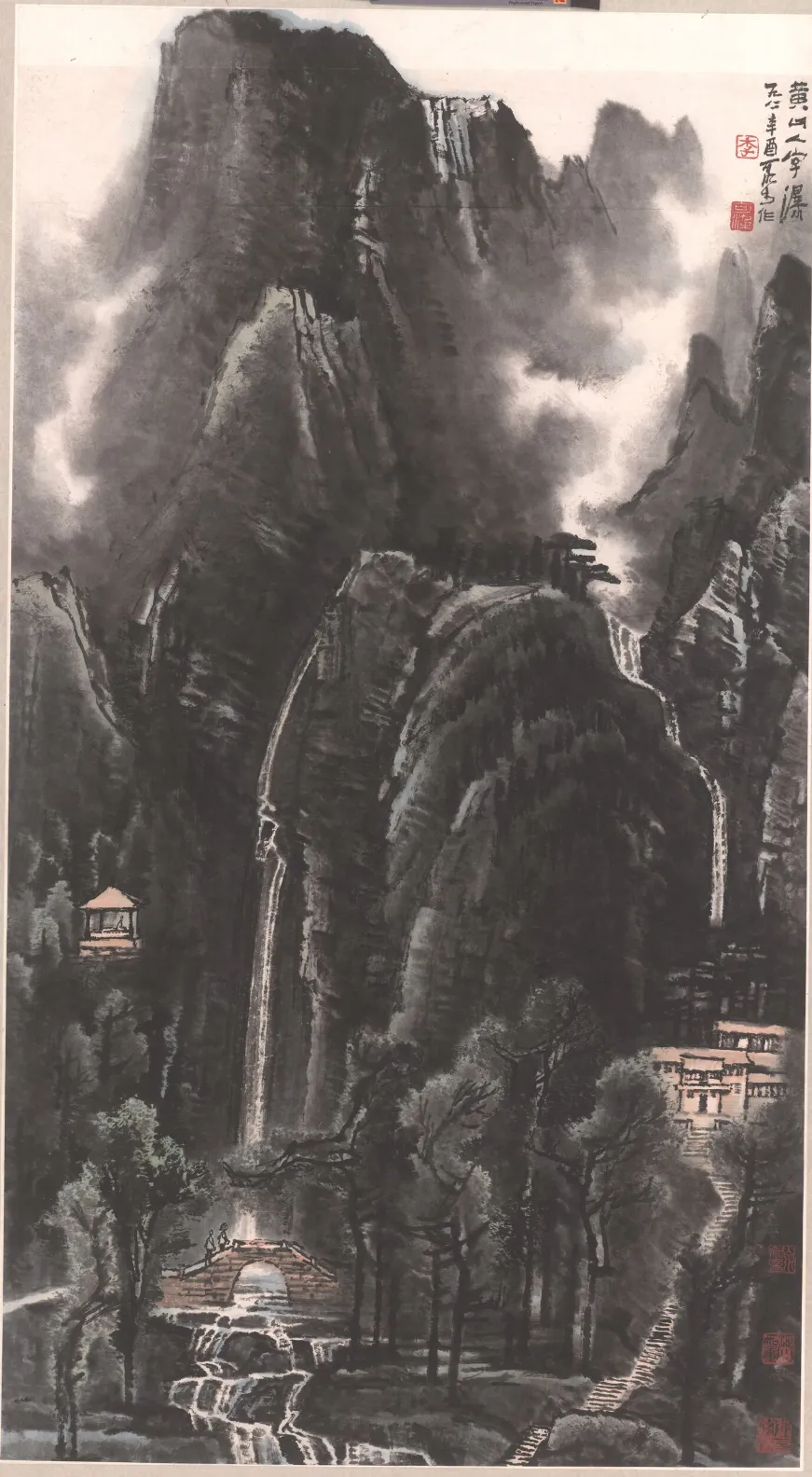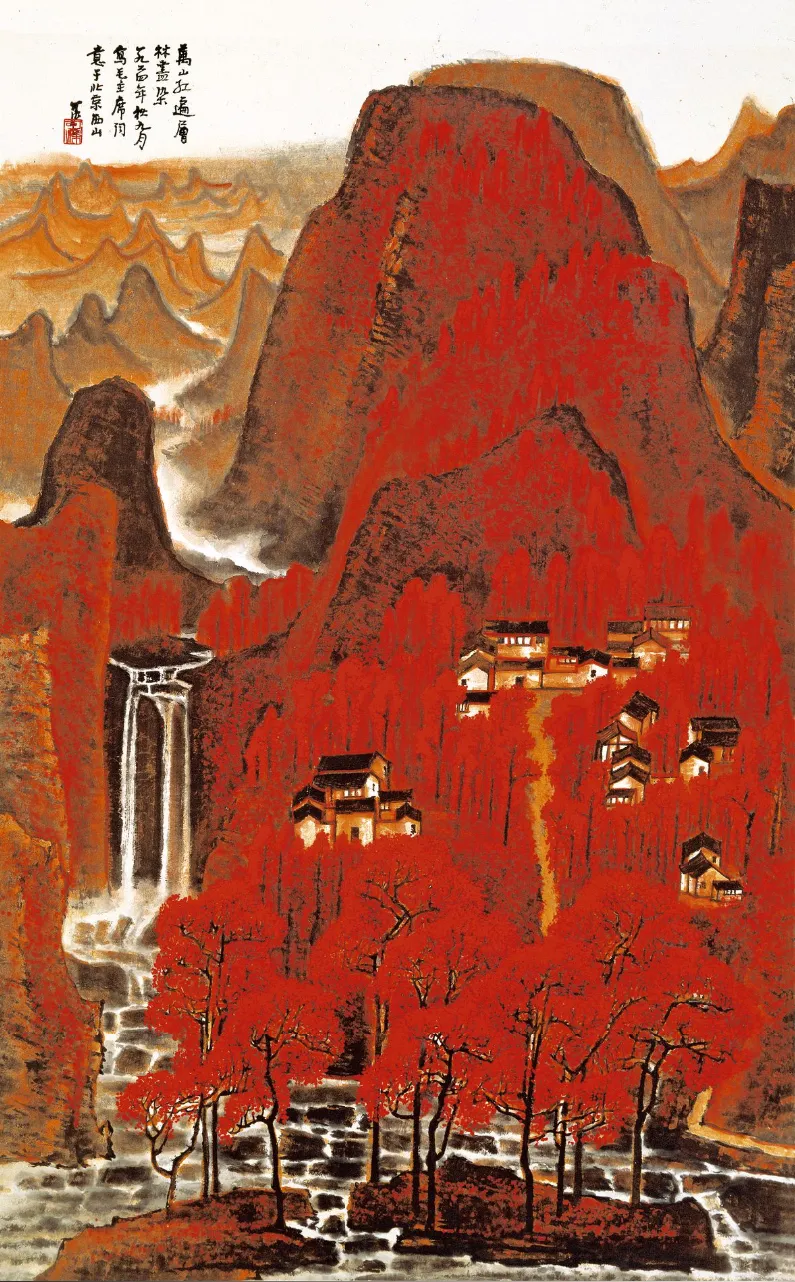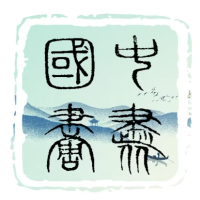
李可染,生于光绪三十三年(癸亥,1907年),江苏徐州人也,近代画坛之翘楚,素为齐白石之高足。少孟岁月,即嗜丹青如命,年仅十三,已入山水画门。至晚岁,笔力更显熟稔,于山水人物无一不精,尤以画牛著称。
Li Keran, a native of Xuzhou, Jiangsu, was born in the thirty-third year of the Guangxu reign (1907) and emerged as a leading figure in modern Chinese painting, being a distinguished disciple of Qi Baishi. From his early years, he was fond of painting and by the age of thirteen, he had already begun to study landscape painting. In his later years, his brushwork became increasingly mature, mastering both landscapes and figures, and he was particularly noted for his paintings of oxen.
李公嗣画之道,奉“胆识为贵,魂魄为要”以论,又曰“深究古法,敢创新意”,致使山水画艺沐新晖,焕古绚今。其画论,主张画艺之从简入繁,复从繁归简,犹如诗中之由浅入深,再归于朴素之美。于素描之技,李公视其为捕捉万象之根基,精研明暗光影之妙理,信其于国画大道之兴衍,实乃助益非浅。
Master Li advocates the way of painting landscapes, emphasizing "valor and insight as treasures, and spirit and soul as essentials." He also advocates "delving deeply into ancient methods while daring to create new ideas," thus revitalizing the ancient art of landscape painting with a new brilliance. His theory on painting insists on progressing from simplicity to complexity, and then returning from complexity to simplicity, akin to poetry's journey from the superficial to the profound, and back to the beauty of simplicity. Regarding sketching, Master Li considers it the foundation for capturing the essence of all forms, deeply studying the subtleties of light and shadow. He believes that a thorough understanding of these elements significantly benefits the development of traditional Chinese painting.


《四牛图》
"Four Oxen Painting"

《忽闻蟋蟀鸣》
"Suddenly Hearing Crickets Singing"

《山水图平远景》
"Landscape Painting with Distant View"

《漓江秋色》
"Autumn Colors of the Li River"

《春雨江南图》
"Spring Rain in Jiangnan"
画赠李之四妹,桃花盛开,红彤彤一片。江南人家、拱桥、远山,皆被春雨笼罩,苍润淋漓,湿气氤氲,空蒙透彻,显江南春季之多雨湿润。
This painting, gifted to Li’s fourth sister, was one of Mr. Li Keran's exquisite works. The peach blossoms are in full bloom, creating a bright red scene. The houses, arch bridges, and distant mountains of Jiangnan are enveloped in the drizzling spring rain, appearing moist and mellow, with a dense mist and a clear, penetrating atmosphere, reflecting the rainy and moist climate of Jiangnan in spring.

《黄山人字瀑》
"Huangshan 'Human Character' Waterfall"
壬子(1979年)四月,李与留学生论黄山,谓山峰分离,组织难,劝研山脉之连结与石纹,及前后山之关系。又戒之,大构图勿重透视,减其强度。分辨物象,勿用西画色彩思维,宜用国画明暗,夸大房明度,解空间感。最难之处在于气象,云之翻滚尤为关键,难以描绘其气氛。
On April 18, 1979, Li discussed sketching Mount Huang with overseas students, explaining that the peaks of Mount Huang are separate, making their structural organization challenging. He urged the students to carefully study the connections, veins, and relationships between the front and back mountains, and advised them to downplay the emphasis on perspective in their large compositions. He also shared a tip: when distinguishing objects (such as mountains and houses), they should not use Western color thinking but rather Chinese light and dark techniques, exaggerating the brightness of houses to address the sense of space. He emphasized that the hardest aspect of painting Mount Huang is capturing the weather, as the mountain comes alive with it, and the rolling clouds are crucial yet challenging to depict atmospherically.

《林区放筏》
"Releasing Rafts in the Forest Area"
此画赠王贵忱,绘两岭高耸,如云对峙,中夹狭长急流,流接云气,竹筏列勇进。
This painting was a gift to Mr. Wang Guichen, depicting towering peaks standing like clouds on either side, with a narrow, steep rapid flowing between them, connecting with the clouds above as bamboo rafts bravely move forward in the rapid stream.

《梅下骑牛图》
"Riding an Ox under the Plum Tree"
绘牧童骑牛,仰观红梅一树。丙戌(1942年),李居重庆农舍,邻牛棚,与大水牛伴,细察其习性与姿态,遂始以墨画牛。晚年,画室名“师牛堂”,示其爱牛之情。师齐白石之简笔,学黄宾虹之拙厚,合二家之长,创“牧牛”之图式,象征民族文化。题曰:“铁骨红心迎来天下春”,文革阴霾既过,此语表其重生之喜。
This painting shows a shepherd boy on an ox, looking up at a red plum tree. In 1942, Li lived in a farmhouse in Chongqing, next to an ox pen, spending his days with a large water buffalo, closely observing its habits and postures, which inspired him to start painting oxen in ink. In his later years, his studio was named "Master Ox Hall," reflecting his deep affection for oxen. Drawing from Qi Baishi's concise and vigorous brushwork and Huang Binhong's dense and mellow style, Li combined these techniques in his "Ox" theme, creating a national cultural symbol in his ox paintings. The inscription "Iron Bone and Red Heart Welcoming the Spring of the World," a phrase he enjoyed writing, expressed his joy of renewal after the Cultural Revolution.

《牧童牛图轴》
"Shepherd Boy with Ox Scroll"
图绘双牛,凫水而憩,眼合休眠;牛背载牧童,幼稚而戴笠,手持柳条,逍遥自在。李可染,当世名画家,亦工诗。齐公之虾,徐公之马,黄公之驴,李之牛,称为世纪之“水墨四绝”。
The painting depicts two oxen resting in water with their eyes closed; on the back of one ox, a naive shepherd boy wearing a conical hat leisurely holds a willow branch. Li Keran, a renowned contemporary painter and poet, is celebrated alongside Qi Baishi's shrimps, Xu Beihong's horses, and Huang Zhou's donkeys as one of the "Four Greats of 20th Century Chinese Ink Painting."

《行书杜甫诗》
"Running Script of Du Fu's Poetry"

《老骥伏枥志在千里》
"Old Steed in the Stable, Aspiring to Travel a Thousand Miles"

《拙者巧之极》
"The Ultimate in Awkward Skillfulness"
李可染探艺之道,提“采一炼十”之训,比之矿夫掘地之苦与炼金者熔炉之勤,真艺之创,须以双重之劳与恒心为鉴。其绘山水,始于四十年代,线条笔墨构其骨架;及至五十年代后,渐转以墨块主其风格,表面看似简约,而意蕴深厚,情感浓烈,意境遥远。其画作,擅长以光引景,尤见高明于山林晨昏逆光之奇景,风格幽朦而迷离,宛若流光溢彩之美景,令人神往。
Li Keran explored the artistic path, advocating the principle of "gathering one and refining ten," akin to the miner's toil and the alchemist's diligent smelting. True artistic creation demands a dual dedication of labor and perseverance. In his landscape paintings, he initially used linear brushwork to structure his works in the 1940s; by the 1950s, he transitioned to primarily using blocks of ink. Although his style appears simple on the surface, it embodies profound emotions and deep, far-reaching implications. Li excelled in using light to enhance scenes, particularly adept at capturing the spectacular effects of backlighting in forests at dawn and dusk. His style, mysterious and hazy, resembles a mesmerizing landscape of flowing, shimmering light, captivating the viewer.
李公绘人之法,动静之际,神态透微妙之趣,形虽夸张,亦不失雅致,朴而不俗,诙而蕴智,随处透露平生之趣味。其画牛,更是气象万千,或步行或卧息,或于溪水之畔嬉戏。牧童骑于牛背,或瞻望群山,感受风之轻拂,或于林中高声歌唱,或与江水争流,数笔勾勒,便成一幅生气勃勃的田园画卷,充满了自然之灵动与生活之韵味。
Master Li's approach to figure painting captures a subtle expression of emotions in both motion and stillness. Despite exaggerated forms, his figures remain elegant and unpretentious, humorous yet clever, revealing the pleasures of life in every stroke. His depiction of oxen is particularly vivid, whether they are walking, resting, or frolicking by the water's edge. The herdsmen, perched leisurely on the oxen's backs, might be seen gazing at mountains, feeling the gentle caress of the wind, singing loudly in the woods, or racing against the river. With just a few brush strokes, he creates a vibrant pastoral scene, brimming with the spirit of nature and the essence of everyday life.

《万山红遍图》
"Mountains Covered in Red"
李可染,以毛主席《沁园春·长沙》之词意,笔墨寄情。此图乃巅峰之作,庚辰(2000年)秋,台湾展之,又著于画集。壬辰(2012年)春,北京保利之拍卖,金达二点九三二五亿。
Li Keran, inspired by Chairman Mao's "Qinyuan Spring·Changsha," expressed his emotions through this painting, a pinnacle of his career. Exhibited in November 2000 at a Li Keran exhibition in Taiwan and included in the exhibition catalog, it was auctioned by Beijing Poly in the spring of 2012 for 293.25 million yuan.
己巳年(1989年),李可染仙逝,享年八十二岁。其艺术成就,犹如星辰璀璨,永昭画史。
In the year of Ji Si (1989), Li Keran passed away, aged eighty-two. His artistic achievements shine like the stars, forever illuminating the history of painting.
责任编辑:苗君

小编乱写一通!!!肯定的告诉你:李可染的老师是林凤眠!!!!!!!!!!!跟齐白石一点半丁都没关系!!!!林凤眠的学生最出名有四个:赵无极、朱德群、李可染、吴冠中!!!